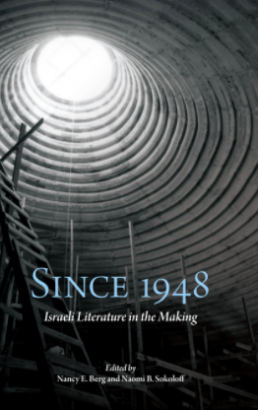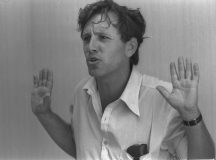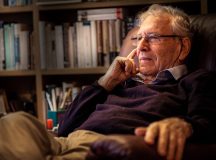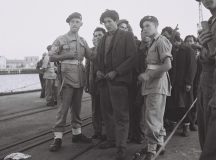In 2013, the New York-based Israeli novelist Rudy Namdar published The Ruined House. Both upon its initial Hebrew release and its English translation by Hillel Halkin in 2018, the novel garnered a great deal of attention precisely because it was a Hebrew novel written in and about the Diaspora and the perceived spiritual crisis in twenty-first century American Jewish life. The novel placed Namdar in the tradition, so some reviewers had it, of Saul Bellow, Philip Roth, and Bernard Malamud, while others drew links to Cynthia Ozick and Leonard Cohen.
For The Ruined House, Namdar was awarded the Sapir Prize in 2014. A relatively new award established in 2000, the Sapir was made in the mould of the Booker, ‘designed to be the most celebrated, if not most elite, prize of its kind,’ Nancy E. Berg explains in her contribution to Since 1948: Israeli Literature in the Making. After Namdar’s win, the Sapir’s rules were revised ‘to disqualify writers whose primary residence was abroad,’ an act of resistance to what Berg calls ‘the deterritorialising of the literature.’ The debate over Namdar’s novel came back to the central question of Since 1948: What is Israeli literature?
Berg and her co-editor, Naomi B. Sokoloff, contend that works like Namdar’s have expanded the definition of what constitutes Israeli literature. Until recently, it ‘has been viewed as Hebrew literature and as a well-defined corpus of works established by a limited number of writers,’ which is to say, novels and poems written in Hebrew by Jewish authors living in the State of Israel.
With an accepted canon of Israeli literature came a ‘reigning history’: that of the 1960s generation of writers like Amos Oz, A.B. Yehoshua, and Yaakov Shabtai challenging the linguistic and thematic conventions set down by ‘State Generation’ authors like Natan Alterman. They were then themselves nudged by the postmodernists, writers who mastered alternative forms as Batya Gur did with the mystery novel, and those like Ronit Matalon and Zeruya Shalev whose perspectives and styles broadened the canon further.
What Berg and Sokoloff want to do with Since 1948 is draw attention to a broader definition of Israeli literature including ‘texts written in Hebrew and in other languages as well, texts by Israelis abroad… [and] texts by both Jews and non-Jews.’ The unified Israeli canon ‘has never been more than a myth,’ they argue. Writers like Dina Rubina, ‘who writes in Russian and is famous among Russian language readers throughout the world,’ and Shani Boianju, whose 2012 debut written in English, The People of Forever Are Not Afraid, took the literary world by storm, show how it is increasingly difficult ‘to delineate the boundaries of Israeli literature.’
In order to illustrate their case, the essays included in Since 1948 — by their own admission — ‘highlight peripheries’ and make ‘observations about outliers.’ By definition, their collection is kaleidoscopic, though it does shine a light on certain dormant corners of the Israeli literary scene. Shachar Pinsker examines Israeli Yiddish-language literature of the 1940s and 1950s written by members of the Yong Yisroel group. Yiddish was the language these writers used to deal with the trauma of the Holocaust, both directly and then indirectly in stories, novels, and poems that focused on ‘the uprooting of local Palestinian Arabs from their villages and neighbourhoods, and the repopulation of these “abandoned” spaces with Jewish refugees following 1948.’
Something similar is observable in the work of the Young Hebrews, so Yael Dekel argues in his contribution on Canaanite literature. Writers like Eitan Notev distinguished themselves by addressing the events of 1948 from the Palestinian perspective, thereby creating a minority discourse as told by the national majority. The very inclusion of Arab characters whose dialogue is written in Hebrew and expressed in full ‘is rare in Hebrew literature,’ or was, writes Dekel, at a time when Israeli novels ‘hardly ever recorded a Palestinian speaking in full sentences.’ Notev’s work, like that of other Canaanite writers, ‘has remained on the margins of Hebrew literature.’
But in addressing contemporary matters, Since 1948 can run aground. Melissa Weininger argues that with the establishment of the State of Israel, ‘the transnational history of Hebrew literature began to be overwritten with a Zionist narrative that privileged Israeliness,’ tying Hebrew and Hebrew literature to the Land of Israel. Only now with works like Namdar’s The Ruined House, Weininger asserts, is Hebrew literature ‘once again exploring, even embracing, its transnational history and origins,’ bringing ‘diasporic spaces into Hebrew literature’ and unravelling ‘the naturalness of the identification of Hebrew literature with Israel and a unitary, monolithic homeland.’
It goes without saying that Hebrew language and literature were an inseparable part of the process of state-building. But as Beth Kissileff highlighted in a 2015 essay in The Tower, Nadmar is by no means the first Israeli writer to live overseas and write in Hebrew. Yoram Kaniuk spent a decade of his life living in New York among the bohemians in the 1950s, for example, later writing a novel-cum-memoir called I Did It My Way (2003) about his experiences. Rachael Eytan moved to New York in 1967 and remained there for the final 20 years of her life, writing Pleasures of Man, published in 1974.
More than that, the Israeli novel taking flight for pastures elsewhere has been an undercurrent in the country’s literature for decades. It was particularly pronounced after the Six Day War when, displaying what Robert Alter called a ‘high-pitched vibration of nervousness about the national setting,’ writers like Haim Gouri and Hanoch Bartov took their novels overseas. Amos Oz’s The Same Sea (1999) is a globetrotting novelistic experiment and many of A.B. Yehoshua’s novels have broken out of Israel’s national boundaries. To this, one could add that some writers like Aharon Appelfeld spent a lifetime toiling away in Hebrew, writing about the Europe of the early 1940s.
Since 1948 is an in many ways illuminating collection of essays on Israeli literature that broadens and deepens our understanding of the subject, yet it is also a work that is bound by certain internal contradictions. It seeks to make a trend out of literary marginalia, elevating certain writers and novels to a greater level of importance than is strictly necessary. And it seeks to turn into something new something that always has been, for Israeli literature, no matter how national, has always had an international undercurrent. The thing that hath been, it is that which shall be; and that which is done is that which shall be done: and there is no new thing under the sun.





































